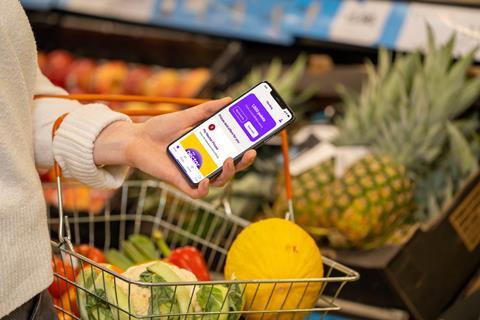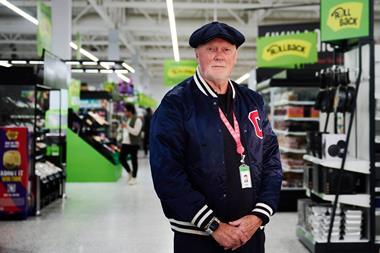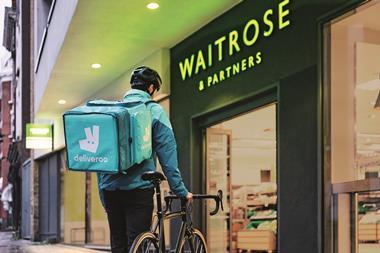
New data from the Food Foundation revealing almost five million adults have experienced food insecurity in the past month has shocked many of us in the fmcg industry.
I’m sure everyone reading this will have seen Tesco’s chairman, John Allan, warning that “the worst is yet to come” on food price inflation. Last year, the IRI team suggested inflation would be hitting 5%-8% by mid-year 2022, and now that’s looking increasingly likely.
Whilst the inflation figures publicly quoted are made up of averages, there is clearly no average when it comes to the personal impact that increasing energy and food price rises, along with legacy of the pandemic, are having on consumers.
Food writer and activist Jack Monroe made a strong case last week when she called out the “devastating” impact of inflation on millions of people across the UK, “with those who have the least being hit the hardest”.
IRI store analysis across price bands tells us that whilst there are differences by category and retailer, there are plenty of examples of inflationary increases hitting entry-level segments harder than some of the more premium lines.
That’s why we welcome the ONS announcement that it will change the way it collects and reports on the cost of food prices and inflation to consider a broader range of income levels and household circumstances. This will help to ensure those making policy decisions have the correct facts at hand.
Read more:
-
Is Jack Monroe right about food inflation hitting the poorest hardest?
-
Asda to double Smart Price coverage following Jack Monroe criticism
-
BRC warns inflation will force consumers to cut back on spending
-
Budget food bloggers to watch as inflation bites in 2022
History shows that when shoppers’ budgets are squeezed, many switch retailers and brands to maximise their value for money. History also suggests that we will inevitably see retailers engage in high-profile investments in price to try and offset some of the price increases for their shoppers in a bid to maintain footfall.
But in 2022, I think we will also see a large number of retailers taking a transformational approach to the way they embrace technology, to create a new-found level of connection with their customers and attempt to create value beyond just price. The likes of Netflix and Spotify have led the way across other industries and have demonstrated just how strong a connection can be built with customers by using technology as a critical enabler.
Arguably the grocery industry has been left behind by comparison. But with enviable access to a wealth of first-party data, there’s a real opportunity to use this to target support where it’s most needed amongst shoppers, and strengthen customer loyalty in both the short and medium term in a way we won’t have seen before.
The result will be the creation of ‘next-level personalisation’ – landing the right communication with the right customer at just the right moment across multiple touchpoints. Data is an essential foundation, and artificial intelligence, machine learning, and clever decision engines help too.
We are already seeing increasing numbers of retailers invest heavily in high-profile loyalty card rewards to influence shopper behaviour, and making this a central pillar of their focus on customer experience.
Outside of grocery, companies like McDonald’s are using innovative technology to create personalised customer connections to great effect. Customer-focused strategies led to the $177bn fast food brand reporting more than 12% in increased global sales in the last quarter compared to the previous year. McDonald’s intend to double down on this with the UK launch of its My McDonald’s loyalty programme.
Supermarkets are increasingly aware of the value of this ‘next level personalisation’. Waitrose plans to improve its myWaitrose programme by offering customers personalised discounts on their most purchased products. Meanwhile M&S has seen its Sparks membership double to 14 million since the start of last year.
Others have also incorporated charitable programmes to help people in their communities. The My Morrisons platform, for example, allows users to join social groups such as NHS Club and Teachers’ Club for access to special offers, as well as the chance to donate to charity.
Sainsbury’s has launched an initiative that lets Nectar members donate their points to charity. Each point is converted into funding directly to the customer’s chosen charitable organisation. This follows in the footsteps of Co-op and M&S, which also fund charities through their loyalty programmes.
Such activity is not only a great example of how data can be used for good, but also for building longer-term loyalty.
There is an immediate benefit to this approach too, and we are seeing some loyalty campaigns looking to create more immediate boosts in sales. Around 95% of promotional sales in Tesco, for example, are now only available via its Clubcard Prices mechanism.
The initiative, designed to help members mitigate inflationary pressure through 4,500 items on sale at discounted rates, is working very well, with more than 20 million households now signed up for Clubcard.
So, whilst inflation will make the months ahead increasingly challenging for many, the opportunity is there for retailers to complement their traditional price-cut investments with a transformational technology-enabled approach to achieve next-level personalisation with their customers.
The retailers that will gain true competitive advantage in both the short and medium terms will be those who best combine these investments in technology, data and clever decision engines, with an ability to create next-level, customer-first strategies. Big change is on the horizon.


















No comments yet